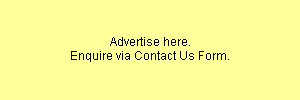1stly check for any leakage, use soap bubble to check. DIY COČ are bound to have leakage due to frequent hands on. also sumtuimes you may have not close it tightly.
If everything is leakage free, then check for any clog tubing and especially at the joint where I believe most joints are not the transparent type and there could be clog in there.
lastly the only possible explanation is that your yeast could be "bad".
could the temperature play a part?... hmmm I doubt so I never experience such .......
If I have a dollar & you have a dollar & we swap, neither is better off. BUT if I have an idea & you have an idea & we swap we are both richer










 Reply With Quote
Reply With Quote


 I guess my tank will have to do without CO2 for a while. Have to wait for the sugar solution to cool first before adding yeast. I don't want to risk anything this time.
I guess my tank will have to do without CO2 for a while. Have to wait for the sugar solution to cool first before adding yeast. I don't want to risk anything this time. 
Bookmarks